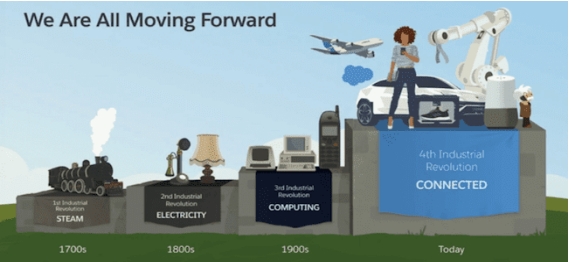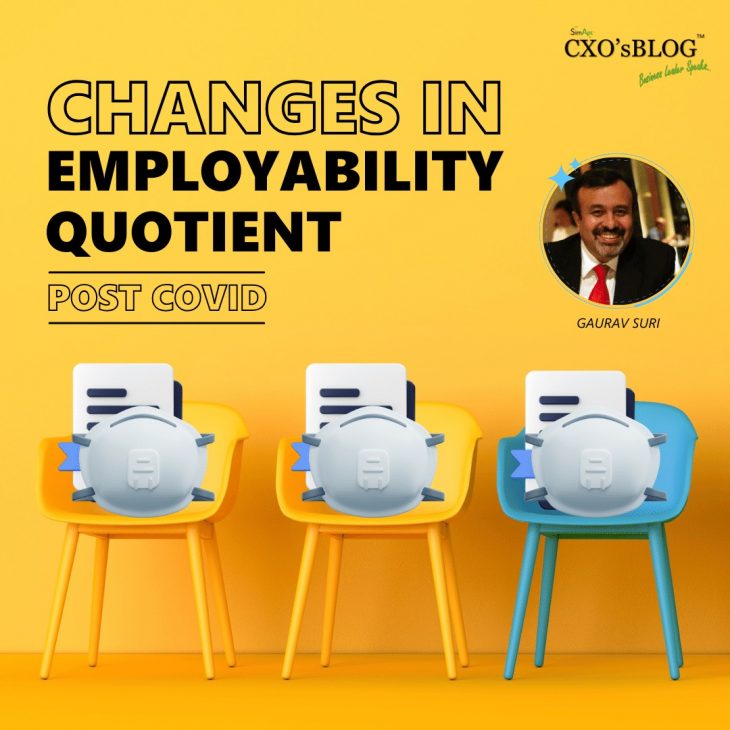Author: Gaurav Suri
Covid, Pandemic , Unprecedented times – Now that I have got your attention let me assuage
you that I am not going to be a harbinger of bad news imapt the number of soothsayers
and crystal ball gazers have increased, and my attempt is not to venture into that territory
at all. Situation has caught us off guard and we are going through testing / trying period in
human history. How we deal with it will determine our future as a collective human race.
Therefore, it will be stupid on my part to predict the future.
However, crisis always makes us look hard at our current practices, take a deep look at
shifting behaviors and help us measure our own relevance with the changing world.
Companies/ people who are able to demonstrate this adaptability and course correct always
thrive. I was recently called upon to learn and interact with academia who are always
thinking ahead on such matters to discuss this issue at large. In the course of this writing I
would like to present my views on this issue.
What is employability quotient?
Defined by the abilities and skills required to do a job and succeed at the long‐term goals set by organizations while providing job opportunities for everyone. A classical definition would say the ability to do a job, set of tasks related to a job or set of jobs, at an acceptable level of productivity set by an employer.
In my mind Employability develops when a person starts working. In other words, majority
of skills needed to do a job are learnt on the job. Building employability quotient involves:
- Focusing on the future of jobs
- Understanding the drivers of employability
- Effects of current global job market
- Training the workforce
And this is how we will try and look at the issue on hand. So, let’s start with the future of
jobs or workplace. The 4th industrial revolution is already here.

The Fourth Industrial Revolution is a way of describing the blurring of boundaries between
the physical, digital, and biological worlds.
- Technology and social networking have redefined how we work
- Irrespective of field of work, jobs are changing and evolving as we step into the
future - New generation of employers as well as employees will adapt with new job market.
While there are naysayers and doomsday predictions I would like to focus on the
possibilities and say the “ opportunities are everywhere “ ‐ Unlike the past, the youth
(millennials, Gen‐Z and the upcoming Gen‐A) has a far wider horizon to explore varied
careers, the likes of which may not even exist today. And for this if you looked at the entire
eco system of
a) Global corporations: With rise of new technologies, globally new jobs are getting
created Global brands and companies are looking at India as the next driver of jobs
and economy.
b) Start Ups: Entrepreneurs have become the latest drivers of job creation in India.
Start‐ups working in various industries demand employees from various academic
backgrounds to drive innovation.
c) Small Businesses: Analysts are predicting, small businesses will be the largest drivers
of jobs in coming years. With a potential of more than a billion people, India has
become the hotbed of small and conventional businesses.
d) Government: Rise in essential services like healthcare, security and social work is
creating newer avenues. Mobile and internet revolution has made these careers
more lucrative and possible for everyone.
Possible jobs in the post Pandemic world ‐ A software developer creates machine‐learning
software in a teepee in rural Tennessee for a Mancunian manager they’ve never met. A
TikTok manager curates content in the Alpine foothills for a green energy company
headquartered in Shenzhen – never having set foot inside its physical office building.
Both are paid on contractual terms that did not exist a mere decade beforehand. ‐
https://www.forbes.com/sites/businessreporter/2020/01/27/what‐will‐the‐future‐of‐work‐
look‐like‐a‐view‐from‐2030/#62e29a5f16a0
Technology will really be the driver of change in the future. This has been evident for a few
years and has got accelerated in the past few months. Some of the shifts therefore will be
more permanent in nature. Irrespective of the field of work, technology has entered all of
our lives. Globally, employers are demanding the understanding of the basic tech from
everyone to drive innovation and efficiency. Businesses as well as governments have shifted
their focus to technology, and therefore, data to solve problems. New jobs creation in every
field is driven by technologies like artificial Intelligence, Biotech, Virtual reality and Solar
energy. Cross sector application of technology is the way of the future.
Its at time like this a whole generation of jobbers are recalibrating their future plans basis
the shock. I would just say its bad timing, and this too shall pass. However, rise of E learning
and ed‐ tech are a reality. As the global scales of economies shift, jobbers need new skills
and newer forms of employment. Unlike before, when most of the learning happened on
the jobs, corporations are going to find less time to train employees. Proactive learning and
job relevance will override qualifications in the future. Today, more than 40% of
employees are now considered non‐permanent workers. As the figures are expected to rise,
the people are embracing more remote, distributed and gig work. Ed‐tech is proving
effective in providing all these workers a fighting opportunity in the pandemic and beyond.
Here remote learning platforms are leading the way. E‐learning start‐ups, global tech
companies, online course providers and educations institutions combined are trying to
provide upskilling opportunities to enable the workforce to maintain a higher employability
quotient. There are tons of resources if you look around from the Byju’s of the world to
unacademy, coursera, udemy or be it the open source content by tech firm or even the shift
in pedagogy by universities as they reconfigure their syllabi to meet the online teaching
needs.
So, this really begs us to answer the next question. What skill sets do the next generation
needs to adapt to? Well most of the requirement remain the same i.e judgement, critical
thinking, people management, co ordinating with others, service orientation some will have
to be brought to the fore like complex problem solving , emotional intelligence and cognitive
flexibility . Complex problem‐solving ability — defined as the capacity ‘to solve novel, ill‐defined
problems in complex, real‐world settings.’ In a world filled with what economists describe as
‘wicked’ problems — problems that are not ‘evil’ but considered wicked because they are
difficult to solve due to incomplete, ever‐evolving requirements — complex problem‐solvers
will be in hot demand. Emotional intelligence to persuade people, generate empathy and
get work done will always be something which requires to be honed.
Cognitive flexibility refers to the ability to easily leap between different systems of thought. It
means being able to see patterns and make new unique associations between ideas. The
outcome of being cognitively flexible is the ability to solve problems and create solutions for
a range of situations across verticals, no matter your organization or field of work. Graduates
can develop this skill by constantly learning new things, training their brain by expanding their
interests and embracing people who challenge their worldview.
Therefore the challenge for educators is how to restore the balance in STEM or technical
education where you bring in soft skills, ability to test learnability of students and also stress
on vocation. If you are confident of your skills, then you feel in control of your future as well.
Ability to deal with amorphous, fluid work states, jobs combined with learning agility and
learning ability will determine the employability quotient. Keep the industry connect stronger
and stay tuned to the real world.
The future is ours for taking if we are open and stay curious to new possibilities.
